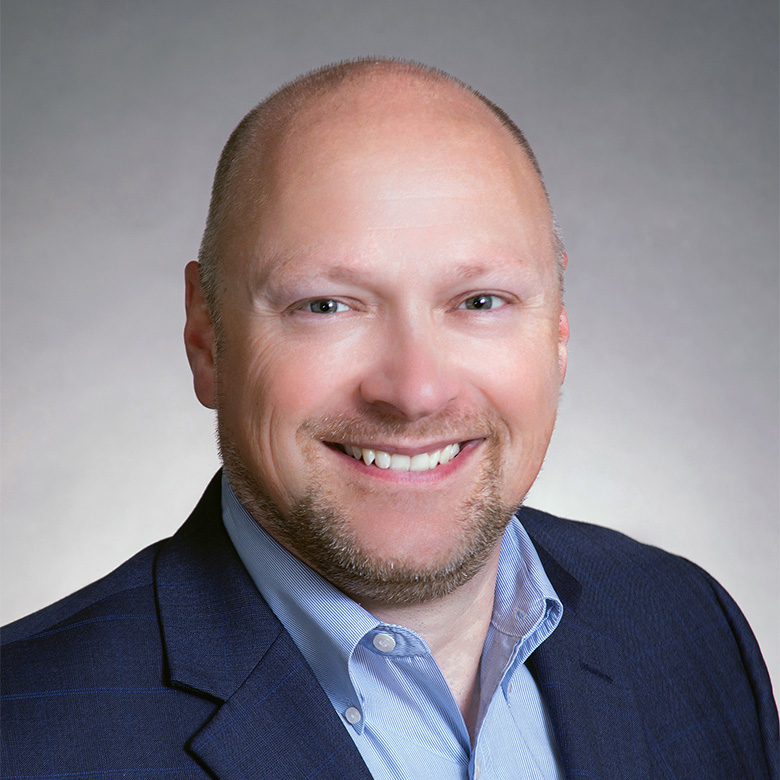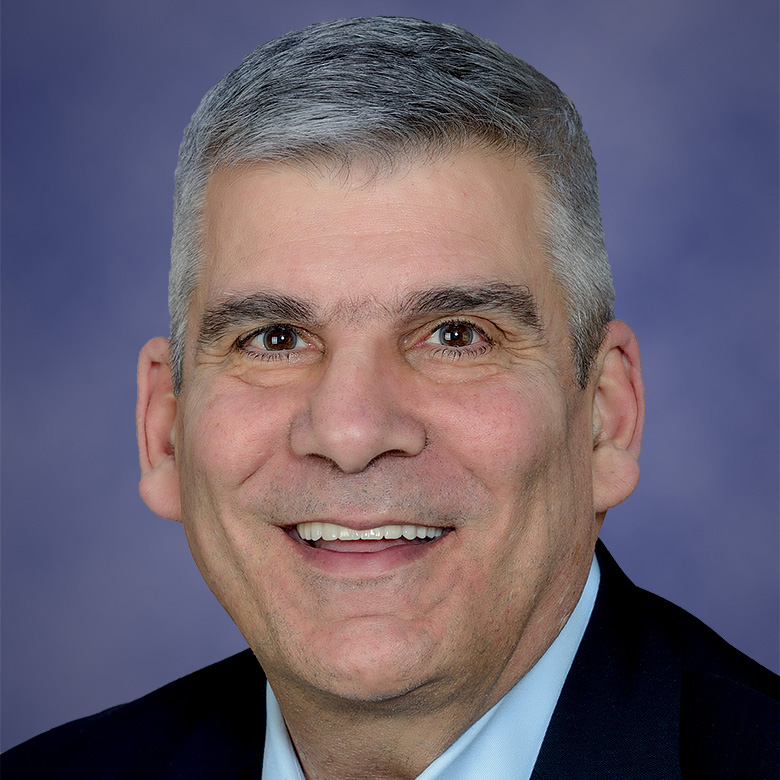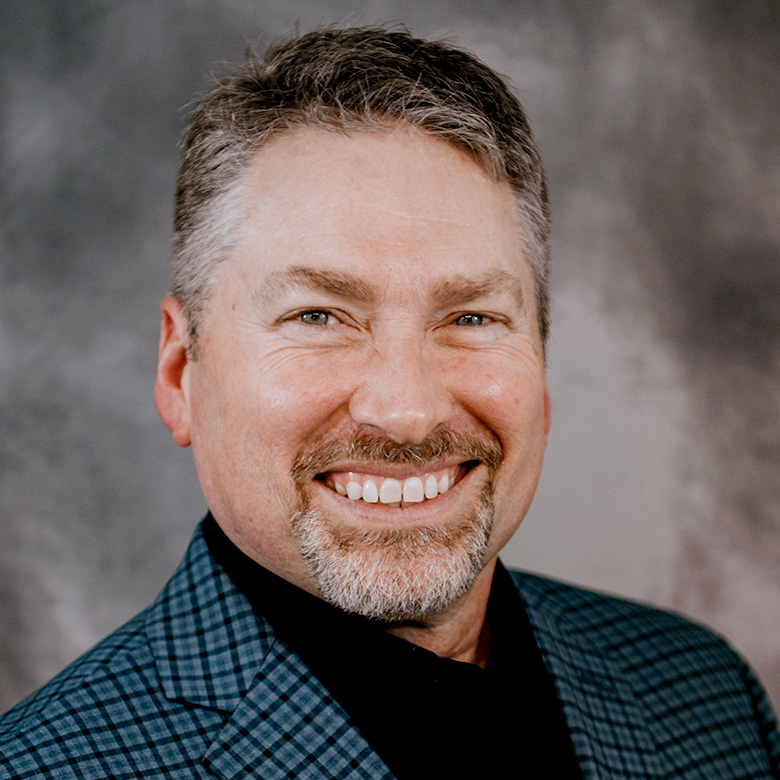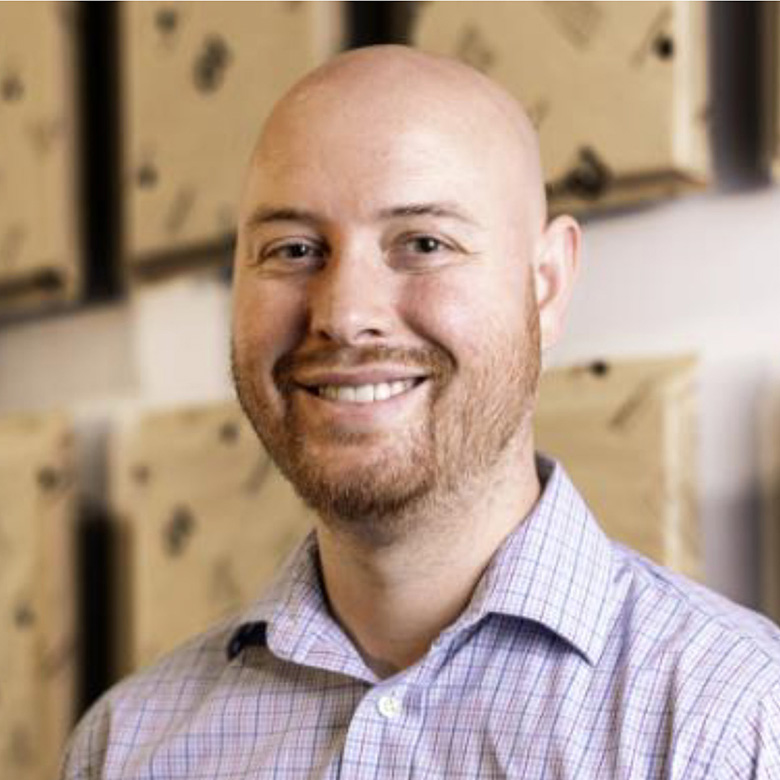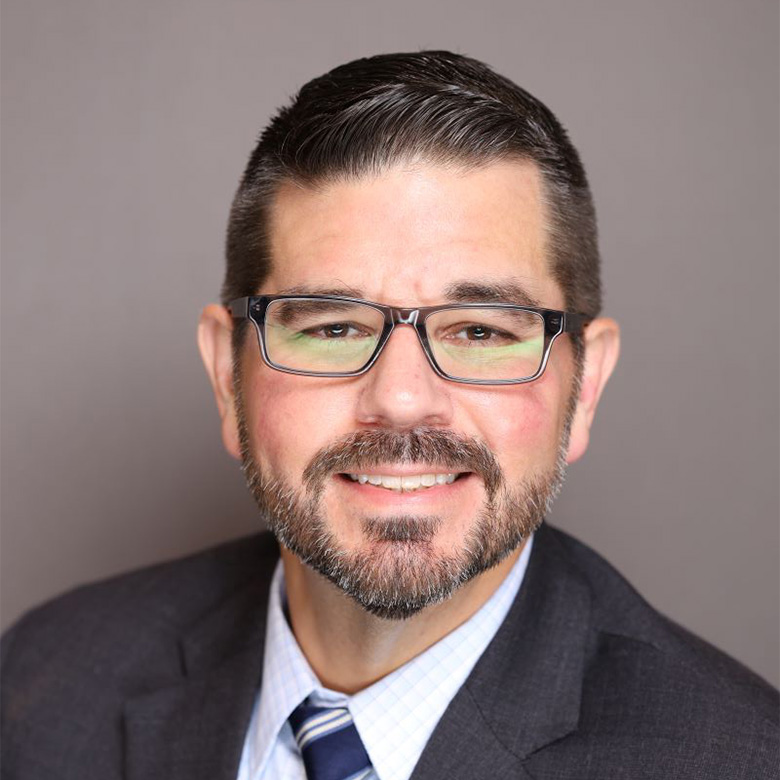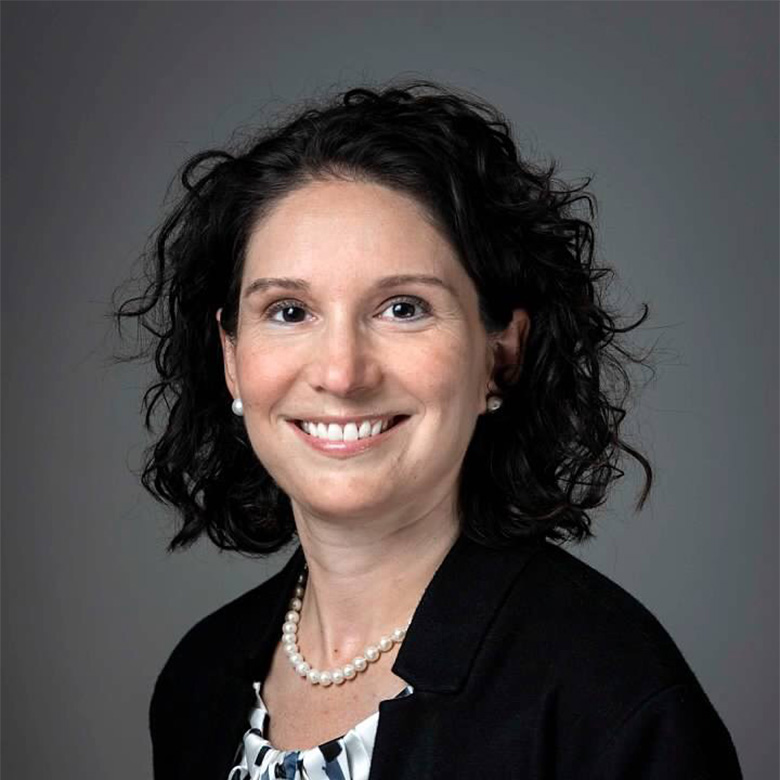Agenda
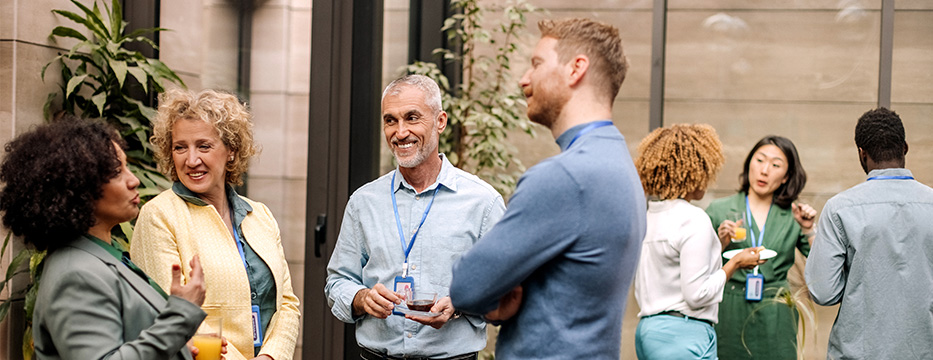
Tuesday, October 28
Registration (Monday Registration Available)
Tuesday, 7:00 AM to 8:00 AM - Registration Area
Early registration is also available on Monday, 4:00—7:00 PM.
You can find the registration area on the third floor of the venue.
Breakfast
Tuesday, 7:00 AM to 8:00 AM - Sungarden
Welcome, Housekeeping, and Keynote Intro
Tuesday, 8:00 AM to 8:15 AM - Regency ABC
I Feel, You Feel
Tuesday, 8:15 AM to 9:15 AM - Regency ABC Keynote
Jimmy Yeary isn't just a songwriter, a singer, or a speaker, he's an advocate for human emotion, connectedness, and outreach to all with whom he comes into contact. As a speaker, Jimmy weaves his ability to tell stories that speak to the heart and emotional memories of all mankind. Teaching these principles, audience members are better able to understand how they can lead and grow in their organizations in a way that makes an impact and unites all under a common goal. Learn the art of valuable connectivity through authentically feeling what you are speaking, to create instant attraction. This is one of the most valuable leadership tools you can possess.
Presented by
Jimmy Yeary, Singer/Songwriter/Speaker
Networking Break
Tuesday, 9:15 AM to 9:45 AM - Regency North Foyer
Lead Instead of Herd—A Human Factors Approach to Improving Safety Performance
Tuesday, 9:45 AM to 11:00 AM - Bluegrass AB Back by Popular Demand
As leaders in safety, it’s important to recognize that humans are fallible and errors are to be expected. But errors do not always have to result in costly outcomes. They can be harnessed and used to improve systems and individuals for better performance. By gaining a deeper understanding and appreciation of human factors—influencers that cause people to behave the way they do—leaders are better equipped to create the climate needed to accomplish the outcomes the organization desires. And since human factors affect everyone, it is advantageous to view outcomes through a different lens. Kevin will share his personal journey to becoming a better leader in safety by understanding how influential human factors are on performance. During this highly interactive session, attendees will reflect upon their past performance, share where leadership mistakes led to undesired outcomes, and discuss what went wrong and why. Participants will discuss how the “herding approach” is used to achieve compliance, a strategy that is neither effective nor sustainable. Kevin will compare this approach to leading using a human factors approach, resulting in outcomes that benefit all stakeholders. Participants will learn what really moves the metrics—the people—and how a leader’s decisions can influence and impact outcomes for better or worse. They will also learn valuable methods to improve individual and team engagement, enhance employee satisfaction and team morale, improve retention, and identify leading indicators that help thwart the rise in undesired outcomes and move the organization towards operational excellence.
Presented by
Kevin Nix, SafeStart
Making the Theory a Reality! Practical Tools for Your HOP Implementation
Tuesday, 9:45 AM to 11:00 AM - Buckeye AB
Too many times, you have seen and heard of the theory behind the five principles of HOP, focusing on shifting from blame-based to learning-based approaches, recognizing that errors are normal, context drives behavior, and learning and improving are vital. Although they sound terrific, you might still be left wondering, “How do I do this thing?” Rather than viewing people as the problem, HOP prioritizes looking at deviations from systems and processes and then making adjustments to these systems. Error is normal. No one chooses to make a mistake. No one wants to get injured. This session will highlight tools that can be added to the HOP toolbox to tactically implement the theoretical strategy. HOP is about getting down to the core conversations and learnings and participants will be fully immersed with open dialogue from Tim. Real on-the-job stories will help participants revolutionize their approaches to safety.
Presented by
Tim Page-Bottorff, SafeStart
Safety Climate is a Culture Catalyst
Tuesday, 9:45 AM to 11:00 AM - Regency E
A positive organizational culture and a positive safety climate are very closely linked. Both are essential to improve productivity, quality, retention, employee engagement, morale—and reduce injuries. This session will define key leadership skills that can improve your workplace safety climate. Participants will be part of the discussion about specific ways individual leaders can influence safety and engagement, and how your organization can support the vital actions for safety climate enterprise-wide to improve safety and culture. Pete will share examples that will help participants see how leadership skills influence safety climate. Discover how to distinguish climate from culture and why it matters, and take part in activities that demonstrate how building leadership skills can have positive effects in the workplace. By the end of the session, participants will become the safety climate and culture catalysts, knowing how to drive positive change, improving the workplace safety climate and fostering a stronger safety culture.
Presented by
Pete Batrowny, SafeStart
The Ugly Truth Keeping Us From Getting Safer
Tuesday, 9:45 AM to 11:00 AM - Regency F Fireside Chat
The basic definition of safety is the process of protecting employees from work-related illness and injury. SafeStart shifts the focus from compliance-only methods to the importance of 24/7 safety. These accomplished panelists will set the stage for an in-depth discussion about the often-unspoken circumstances that impact workers’ safety, like wages, cost of living, inflation, shift structure, work-life elements and the subsequent effects and human factors they bring. Ignoring the issues doesn’t make them go away. This chat will introduce better practices in helping your employees thrive and keeping them and their co-workers safe. The discussion will also involve thinking outside the box to determine solutions that make the truth more bearable for everyone and determine a plan you can execute for overall safety.
Presented by
Susie Scott, Oliver Wyman Vector
Larry Pearlman, AFL Global LLC
It’s Not Rocket Surgery, It’s Brain Science
Tuesday, 9:45 AM to 11:00 AM - Regency G
Through an examination of how the conscious and subconscious mind affect danger and risk, this session introduces two key skills that workers can use to stay safe 24/7 and equips leaders with insights on how to avoid blaming the worker. Backed up with neuroscience and behavioral research, this engaging and interactive presentation is delivered from the down-to-earth perspective of a safety professional.
Presented by
Danny Smith, SafeStart
Short Break
Tuesday, 11:00 AM to 11:15 AM - Regency North Foyer
Good Governance, Leading a Multi-Site SafeStart or SafeLead Implementation
Tuesday, 11:15 AM to 12:30 PM - Bluegrass AB
Many organizations are facing the challenge of leading multi-site implementations of SafeStart, SafeLead or both. Leaders can facilitate successful multi-site implementations by assembling the right team, setting strategic goals, and utilizing tools to ensure each site is accountable for meeting expectations and sharing best practices. Join Pete in this interactive session that focuses on what good governance looks like and discover how integrating safety and human factors with a corporate governance framework enhances transparency, accountability and long-term performance. This session will help you understand the structure of a corporate governance team, tools to measure and monitor success, and why it’s important for an organization’s overall management system and culture.
Participants will take part in an example SafeStart governance rollout and learn what topics can be covered in governance team meetings. They will define their vision of success and come away with an understanding of the structure and relationship between corporate governance and a site-level steering committee. Attend this session to gain insight into how leading organizations align safety leadership in supporting SafeStart, drive safety-focused decision making, and use integration tools to foster a culture of accountability.
Presented by
Pete Batrowny, SafeStart
New Perspectives on the Hierarchy of Controls and the Bowtie Model
Tuesday, 11:15 AM to 12:30 PM - Buckeye AB
Although most safety professionals are familiar with the hierarchy of controls, many still think that the last line of defense is personal protective equipment. Unfortunately, this common perspective is inaccurate. PPE is not the last line of defense. In fact, the doctor tested you for the last line of defense shortly after you were born. You have been using them all your life—except for those times when you or your employees were seriously injured. How does this impact the incident trajectory in the bowtie model? And more importantly, how can you and your employees ensure they get the benefits of the last line of defense to prevent (the majority of) SIFs? This session will engage participants in a conversation about what really is the last line of defense and why people do not always get the benefit of it. Participants will also take away specific techniques to enable them to prevent serious injuries and fatalities everywhere.
Presented by
Larry Wilson, SafeStart
Smarter, Safer Workplaces: How AI Is Reshaping Safety Strategy
Tuesday, 11:15 AM to 12:30 PM - Regency E
As AI transforms the workplace, safety and workforce strategies must evolve alongside it. Based on insights from the 2025 Corporate Listening Tour by the American Society of Safety Professionals (ASSP), this session explores how organizations are using AI to enhance safety, anticipate risk, and improve performance. We’ll cover emerging trends, practical steps companies are taking, and how AI is reshaping roles, expectations, and opportunities across industries. Learn how safety leaders are becoming strategic advisors, how workers are responding to change, and what it takes to be truly AI-prepared. ASSP, a trusted voice in workplace safety, has launched an AI Task Force to explore AI’s impact on the future of work. As part of this effort, attendees will also get a demo of ASSP’s AI-powered Handbook tool—positioned as a trusted source to efficiently access safety standards and guidance in the age of AI. Now is the time to lead with intention—and help shape a smarter, safer future of work.
Presented by
Jennifer McNelly, ASSP
Tom Kerschner, American Society of Safety Professionals
People Before Paper: Systems That Stick
Tuesday, 11:15 AM to 12:30 PM - Regency F Fireside Chat
Not all safety systems are created equal — but you already knew that.
At the core of every effective system is a significant goal: No lives lost. No lives changed. That’s the real meaning of the journey to zero harm and why systems that work for people are more important than ever! In this fireside chat, Brad and Nelson explore the often-overlooked human aspect of safety tracking systems. While most systems are designed to meet regulatory requirements, the ones that truly make a difference are informal, behavioral, and people-centric systems that influence daily decisions. This session will delve into how systems can be designed to capture data, raise awareness, and enhance safety for your team members.
Drawing on hard-won lessons and real-world examples, discover what happens when systems are built with people in mind, rather than focusing solely on regulatory paperwork. Whether you're starting from scratch or building on your existing framework, this fireside chat invites you to share stories, ask questions, and partake in a conversation that values progress over perfection, people over process, and may even introduce a few curveballs along the way. This conversation is for the curious and the committed—if you're building or transforming a safety system, or simply contemplating where to start, you don’t want to miss this.
Presented by
Nelson Bodnarchuk, Fuerte Metals Corporation
Brad Bray, Nucor, California Steel Industries, Inc.
We've Upped Our Supervisor's Skills—Up Yours!
Tuesday, 11:15 AM to 12:30 PM - Regency G Back by Popular Demand
Frontline leaders and supervisors are considered by many to have the toughest position in any plant. Frontline leaders must keep their employer happy by fulfilling all KPI goals and strategies while at the same time keeping employees engaged and focused on those same goals and strategies. But it's not that simple. Successful leaders need to know how to fine-tune hazard identification skills, give positive feedback, and have difficult conversations—all while keeping human factors in mind. Participants will become part of Deric's presentation and evolve into better communicators in safety and performance in a group discussion on difficult conversations and best practices, collectively identify and practice the soft skills required for true climate/culture change, and conduct a real-time SafeLead risk assessment and discuss solutions.
Presented by
Deric Ostrum, SafeStart
Lunch
Tuesday, 12:30 PM to 1:45 PM - Sungarden
Moving From Stop Work Authority to Start Work Authority
Tuesday, 1:45 PM to 3:00 PM - Bluegrass AB Back by Popular Demand
Stop Work Authority has been utilized in industry for over 25 years to authorize employees to cease work if they perceive unsafe behaviors or conditions present. This has undoubtedly led to saving lives and preventing injuries. What would happen if we flipped the concept upside down and asked employees to only start work when the conditions are safe to do so? This session will engage participants to explore a new concept that combines human factors, fatality prevention and barrier thinking into a powerful way to reduce risks. Fundamental to implementing 'Start Work Authority' is the need to identify high-consequence risks, e.g., fatality potential events and defining how human factors are identified and mitigated before and during work activities. Participants will outline an approach to adapt 'Start Work Authority' to their organization as well as define the steps to achieve leadership support for this approach.
Presented by
Larry Pearlman, AFL Global LLC
Rethinking SIF Prevention – Models, Mindsets, and Missed Opportunities
Tuesday, 1:45 PM to 3:00 PM - Buckeye AB
Over the past decade, numerous SIF (serious injury and fatality) prevention models have emerged from organizations like DEKRA, the National Safety Council (NSC), the Edison Electric Institute (EEI), and others. Most share common elements: PDCA (plan, do, check, act) cycles, high-energy source identification, and human and organizational performance (HOP) principles. Yet, despite good intentions and extensive research, SIF rates have plateaued—even as total recordable injury rates continue to decline. While a surprising majority of SIFs occur outside the workplace, many organizations continue to focus solely on workplace strategies for prevention. In this interactive session, two safety leaders will spark new thinking through real-time polling and small group discussions.
“Are we complicating the path to SIF prevention by constantly reinventing it?” In our pursuit of innovation, are we losing sight of proven fundamentals? This session will challenge prevailing assumptions, critically examine the role of HOP in SIF modeling, and propose that a “back to basics” approach—centered on risk amplification and psychological safety—may offer a more sustainable path forward. Participants will leave with a deeper understanding of the broader SIF landscape, why workplace-only approaches fall short, and how simpler, people-focused strategies may ultimately deliver greater impact.
Presented by
Lori Guasta, Environmental Resources Management (ERM)
Don Wilson, SafeStart
From Words to Action: The Importance of Leading Safety
Tuesday, 1:45 PM to 3:00 PM - Regency E
Most leaders start their day with the intention of getting everyone home safely. But the way in which they lead safety can range from helpful to hindering—and they may not understand how to effectively lead safety. This session will empower you to enhance your organization's safety performance by identifying leadership actions that may be reducing the effectiveness of safety controls. Join in the discussion about what happens when someone deviates from a plan or makes a mistake. Hear real-life stories about the effects of human factors on leaders and take away practical examples of how to create an environment where employees feel safe speaking up and will share their ideas, struggles and mistakes so that the organizational system can be improved. Watch video footage of what leading safety looks like and learn how to integrate safety leadership into other operational activities while improving morale, retention, efficiency, and profitability. Participants will leave with a better understanding of how to put a more resilient safety culture into action, ultimately leading to safer workplaces and improved operational performance.
Presented by
Leigh-Ann Stewart, SafeStart
David Watts
Keeping Your Steering Committee Alive
Tuesday, 1:45 PM to 3:00 PM - Regency F Fireside Chat
A successful steering committee has clearly defined roles and responsibilities, provides governance, ensures a unified point of view is reached among the mix of staff who make up the committee, focuses on collaboration, manages risks, has executable goals, and effectively communicates and prioritizes regular meetings. However, checking all boxes to form the best steering committee is only the first step in an ongoing process. What happens when something doesn’t go according to plan, you lose your safety champion, or the committee members become overrun with work and the meetings are no longer a priority? Join in the discussion with our industry experts about the successes and challenges of “keeping your steering committee alive.”
Presented by
Paul Thompson, Epsilyte LLC
Irene Kaufman, SafeStart
A Positive Perspective: Remove the Negative From Safety
Tuesday, 1:45 PM to 3:00 PM - Regency G Back by Popular Demand
Psychological studies have shown that the human brain gives more weight to negative experiences than positive ones. And when it comes to working in safety, there’s no question that the stress of the job can be all-consuming. Even the way safety is measured focuses on the seemingly negative aspects, like incident or injury rates and reporting (near miss instead of good catch). It’s almost impossible to quantify what safety prevented because it didn’t happen. For example, we say we had 10 injuries last year, not we prevented 350 people from getting hurt last year. A way to reduce stress and mental fatigue is to shift the messaging from negative to positive. In this session, participants will work together in a positive thinking seminar to explore how to take the states, errors, and CERTs and put a positive spin on the messaging (with SafeStart cards) and discuss how to fight complacency by growing engagement.
Presented by
Josh Schmitz, CG Schmidt, Inc.
Networking Break
Tuesday, 3:00 PM to 3:30 PM - Regency North Foyer
From Complacent to Courageous: How to Build an Unstoppable Safety Culture
Tuesday, 3:30 PM to 4:45 PM - Bluegrass AB
If we all want everyone to go home safely, why do accidents still happen?
Safety rules, policies, and procedures are essential, but they don’t always translate into real-world behavior. Even the best protocols won’t prevent accidents if they don’t align with how people think, act, and interact. A courageous safety culture doesn’t happen by accident. It is intentionally designed to shape how employees think about safety, act in critical moments, and interact with one another to create a shared sense of responsibility. This session will introduce a proven framework—The 4 Dimensions of Culture—that magnifies SafeStart’s principles into a deeply ingrained mindset and how each dimension influences safety behaviors and transforms passive compliance into active safety ownership. Participants will hear case studies from organizations that have successfully transformed their safety cultures using this framework. This isn’t just another lecture. This interactive session will be about engagement and thought-provoking questions, opening the floor to have a conversation at certain points, and providing perspectives that may challenge leadership and cultural ideologies. Learn how well-intentioned organizations with a high focus on safety can unintentionally drive complacency into their safety culture. Participants will also leave with actionable steps to design a high-performing safety culture.
Presented by
David Sears, SSAB Americas
Greg Cagle, Author
From Human Error to Enhanced Performance: The Future of High-Reliability Organizations
Tuesday, 3:30 PM to 4:45 PM - Buckeye AB
While there are various approaches to eliminating or minimizing human error (HOP, human factors, ergonomics, etc.) there is little offered at an organizational level to enhance performance—whereas in sports there has been a combined focus for years. For example, in tennis, reducing unforced errors (double faults) improves performance but it doesn’t make you serve the ball faster or more accurately. This session explores how critical error reduction techniques not only reduce performance errors but gives real-life examples of how learning them well has improved the performance of Olympians, hockey players and basketball players. These techniques were then taken to high-reliability organizations and significant improvements of 40–50% in KPIs such as quality, production efficiency and customer satisfaction were tracked and measured. In addition, engagement levels improved because people are more motivated to be successful than to prevent injuries—promotions don’t come from not getting hurt at work. Join Larry in a discussion about how you, your employees and your organization can benefit from going beyond high-reliability and the current “state of the art” to enhanced performance and improved engagement.
Presented by
Larry Wilson, SafeStart
The Dark Side of the Force: Strategies for Leaders to Succeed on the Night Shift
Tuesday, 3:30 PM to 4:45 PM - Regency E
It’s no surprise that the night shift comes with most of the same challenges that the day shift hosts. When the sun goes down, a unique set of risks, challenges and opportunities emerge for the night shift crew. Join Pete in this discussion about the climate and culture of night shift work—including communication challenges, accountability and other distinctive aspects of working after dark. Interaction will be encouraged when the conversation shifts to personal considerations like sleep, health and human factors. Participants will learn about the positive aspects of working this shift and leave with actionable insights to help build safer, more supportive environments for employees working through the night. Participants will be encouraged to discuss and share success strategies to optimize organizational and personal aspects of working the night shift.
Presented by
Pete Batrowny, SafeStart
The Future of EHS
Tuesday, 3:30 PM to 4:45 PM - Regency F Fireside Chat
You don’t need to be Marty McFly to know that the safety practices of today have a significant impact on the future of the environment, health and safety (EHS). EHS has always been an evolving discipline, it has to be if you want to protect the health and safety of employees in their work environment. This big picture conversation among these safety powerhouses will break down things like trends that will shape the future of safety, the implications that more attention is required for off-the-job safety, advancing technology and the impacts of safety, climate and culture.
Presented by
Jennifer McNelly, ASSP
Chris Williams, Voluntary Protection Programs Participants’ Association (VPPPA)
Lori Guasta, Environmental Resources Management (ERM)
Transforming Human Factors with Artificial Intelligence
Tuesday, 3:30 PM to 4:45 PM - Regency G
Discover how generative AI can revolutionize human factors and enhance SafeStart practices by understanding the fundamentals. Through a powerful combination of conceptual frameworks and live and recorded demonstrations, this session will focus on immediately applicable AI tools and techniques to improve safety, quality, and organizational effectiveness. Audience participation will be used to gauge current AI usage and existing challenges. Participants will leave with practical insights about AI integration that can elevate leadership effectiveness, safety performance, and operational excellence. Explore AI-powered techniques to enhance communication and learning and uncover how generative AI can aid with policies and procedures. Learn ways to leverage AI tools to analyze data and improve individual and organizational response to close calls and incidents and address critical considerations for responsible AI implementation, including appropriate AI-human collaboration, privacy protection, data security, and output accuracy.
Presented by
Eduardo Lan, SafeStart
Short Break
Tuesday, 4:45 PM to 5:00 PM - Regency North Foyer
Networking Reception
Tuesday, 5:00 PM to 6:30 PM - Sungarden
Wednesday, October 29
Breakfast
Wednesday, 7:00 AM to 8:00 AM - Sungarden
Day 2 Opening Remarks
Wednesday, 8:00 AM to 8:30 AM - Regency ABC
Presented by
Larry Wilson, SafeStart
Short Break
Wednesday, 8:45 AM to 9:00 AM - Regency North Foyer
Talk, Listen, Lead: The Keys to Successful Safety Leadership
Wednesday, 9:00 AM to 10:15 AM - Bluegrass AB
Have you ever wanted to be on the ground floor of a new product? Join one of SafeStart’s top SafeLead Consultants for a sneak peek at an upcoming offering. The program will teach participants how to be effective in three of the most crucial conversations leaders have: giving positive feedback, identifying hazards, and handling difficult conversations that many prefer to avoid. These conversations can be sidetracked by human factors like distraction, frustration, or impatience. In this session, you’ll practice techniques to improve your skills, such as how to give genuine positive feedback, help team members recognize common hazards, and tackle tough conversations. You'll also learn seven words to remove from your workplace conversations and why. Most importantly, you'll be part of the discussion about how the activities worked for you and can share your input directly with the source on what you’d like to see in the final product.
Presented by
Kevin Nix, SafeStart
Getting the First 90 Days Right: How to Protect New Workers
Wednesday, 9:00 AM to 10:15 AM - Buckeye AB
The first 90 days of employment are critical for the entire employee experience. This period sets the tone for safety, personal success and furthering the overall safety culture. Those first 90 days are typically the most dangerous of any employee’s career. Despite these facts, most organizations fail to engage employees, provide memorable moments or teach them about risk and mitigations. This session explores the imperative to get the first 90 days right, build relationships and set the tone for the organization’s safety culture. Participants in this highly interactive session will take part in group discussions about how the first 90 days integrate within the broader safety culture. There will be a simulation of what the new hire will experience once onboarded, outlining the best practices for managing work and risk. These challenges are particularly relevant as businesses struggle to attract and retain quality employees. Gain innovative examples of techniques to reduce the risk of injury in the first 90 days.
Presented by
Larry Pearlman, AFL Global LLC
Erika Pouliot, High Liner Foods
Stop, Collaborate and Listen: Improving Safety Outcomes With Teamwork
Wednesday, 9:00 AM to 10:15 AM - Regency E
Safety is a goal best achieved with teamwork. As Tim Page-Bottorff says, “compromise can happen without losing your passion for what you love or believe in.” It starts with your people and human factors. Ambiguity, fear and other states of mind flourish in spaces of conflict and isolation. Folks left to their own devices in a work culture that doesn’t prioritize clear communication are unlikely to receive the information and context they need to avoid danger. And they’re not sharing their own first-hand safety knowledge to improve the organization either. The key to alignment requires workers and supervisors to stop, collaborate and listen. This session is about turning a bunch of individuals into a proper team. It establishes a connection between people and technical systems, and introduces a key communication tool to jumpstart collaboration between managers and workers. Learn leadership skills that can improve your safety culture and see how collaboration makes safety happen.
Presented by
Tim Page-Bottorff, SafeStart
Linking Human Factors to Human Functions
Wednesday, 9:00 AM to 10:15 AM - Regency F Fireside Chat
Human factors are the mental and physical states that influence how people behave. The key performance indicators for employees hone in on the direct impact of human factors. These expert speakers will define the links from human factors to quality, productivity, performance, and other metrics that are commonly seen at various facilities, regardless of industry. Bring your own experience and join in the discussion about how to maximize the efficacy of strategizing human factors in organizational performance.
Presented by
David Bianco, Safe and Sound Texas LLC
Cari Field, Printpack
Human Factors Review: Lessons Learned from Real-World Applications
Wednesday, 9:00 AM to 10:15 AM - Regency G
A SafeStart Human Factors Review (HFR) helps determine how well companies are considering human factors in their workplace, and it also helps to identify opportunities to move systems, programs and initiatives from reactive to proactive/predictive. Rhonda, SafeStart’s resident expert on HFRs, will have a conversation about what it's like to undergo an HFR, and participants will have the opportunity to be part of that conversation. This session will discuss how human factors can be integrated into systems and leveraged with individuals to guide the sustainable development of safety excellence. Participants will get a first-hand look at a typical Human Factors Review to better understand how human factors are affecting day-to-day operations and safety. Rhonda will then speak to what happens after the HFR, in terms of sustainability and ongoing injury reductions according to SafeStart’s prioritized, long-term plan for success, guidance and ongoing support. Participants will leave the session knowing the benefits of HFRs, and how they can contribute to the additional planning required for successful sustainability.
Presented by
Rhonda Piggee Johnson, SafeStart
Networking Break
Wednesday, 10:15 AM to 10:45 AM - Regency North Foyer
Can We Skip to the Good Part? SafeStart Implementation Best Practices
Wednesday, 10:45 AM to 12:15 PM - Regency ABC Panel Discussion
Forward-thinking companies that implement SafeStart Now are looking beyond compliance to implement human factors elements into their existing safety management systems. But when it comes to sustaining a SafeStart Now implementation, there typically isn’t a one-size-fits-all approach. It can be helpful to hear what worked for others, and more importantly, what didn’t. SafeStart training allows you to rely less on luck and more on skill. But what if you could rely on work that trusted advisors have already done? Attending this panel will also allow you to skip to the good part and consider the methods other sites have tried and tested. The panelists will discuss the four powerful techniques in a successful SafeStart implementation and the benefits of a 24/7 mindset with representation from small and large sites.
Presented by
Alan Featherer, Syensqo
Mike Halperin, Pennex Aluminum
David Bianco, Safe and Sound Texas LLC
Jan Barnewall, Zekelman Industries
Inside Tips: Best Practices in SafeLead Implementations
Wednesday, 10:45 AM to 12:15 PM - Regency EFG Panel Discussion
Leaders embody the archetype of strategists for safety in organizations and often create the blueprints that organizations can use to direct future safety procedures. And when it comes to using best practices, the best-case scenario is that the hard work has already been done and the prescribed sets of methods and techniques are a foolproof game plan to help you move forward. In the same way that SafeLead provides better leadership skills, this panel session with the most knowledgeable SafeLead-trained leaders will provide the essential knowledge all leaders need to know to be successful in a SafeLead implementation. Bring your questions and your personal experiences for this interactive panel session.
Presented by
Andrew Bissot, Metallus Inc.
Bryan Valdez, Albany Engineered Composites
Steve Obarowski, Benjamin Moore
Tom Wertman, Acme Corrugated Box Company
Lunch
Wednesday, 12:15 PM to 1:30 PM - Sungarden
Navigating Workplace Dynamics: Generational Perspectives
Wednesday, 1:30 PM to 2:45 PM - Buckeye AB
When it comes to generational differences in the workplace, it often boils down to more than just a difference of opinion. Misconceptions in the form of stereotypes and biases can significantly impact communication and the way people function and work together. With technology advancing and changing the way workplaces operate (and even communicate), some may ask the question: “Can you teach an old dog new tricks?” Which sparks the counter question, “Are new tricks always necessary when the old tricks are backed with proven stats that they work?”
With preconceived notions about each generation, there are bound to be misunderstandings with each side thinking their way of doing things is the right way. Human factors can impact how we react and those misunderstandings can create potential safety hazards. By understanding the nuances of each generation's approach, you can learn how to address generational differences in your workplace. Join Teena and Christien as they each take the stance of their own generation and not only provide their perception of the other generation’s point of view but also call on the participants to provide their input as well.
Presented by
Teena Blount, SafeStart
Christien Renner, SafeStart
Saving Your Safety Culture with No-Blame Accountability
Wednesday, 1:30 PM to 2:45 PM - Regency E
Blame suffocates culture. The solution is positive accountability. This presentation will give audiences the know-how to diagnose blame within their own work cultures—highlighting the common causes of blame and the misconceptions that allow it to thrive—as well as the tools to cut it out of your organization. Start curating the positive accountability necessary to strengthen your operations and enhance safety.
Presented by
Danny Smith, SafeStart
Last Word Lodge
Wednesday, 1:30 PM to 2:45 PM - Regency F Fireside Chat
A lodge is a place of gathering for social interaction that allows people to connect and emphasizes community engagement. The Last Word Lodge is the place for you to get the last word in and get all of your burning questions answered. This session was left until the end for this very reason. Join SafeStart’s pre-implementation, during implementation and post-implementation specialists to discuss anything under the human factors umbrella. Whether you want to know the best way to address human factors in your facility, can’t decide between SafeStart Now or SafeLead or you have general questions about planning and execution, project management, implementation, post-integration/sustainability support or something you heard while at the SafeStart Forum, this session will allow you to speak to the experts without having to go through a formal lodge initiation process.
Note: due to a schedule change, Kelley Norris will be stepping in for Tyler Keith.
Presented by
Dennis, Tyia and Tyler , SafeStart
Kelley Norris, SafeStart
Getting Leaders Actively Involved in Supporting Your Implementation
Wednesday, 1:30 PM to 2:45 PM - Regency G
Leaders must foster a culture of engagement in order to successfully implement SafeStart. They are already tasked with ensuring that their organization complies with all relevant health and safety regulations and standards and SafeStart is an extension of that; it’s designed to complement existing safety efforts. This session will supply practical strategies to secure leadership buy-in and promote active involvement. Participants will be fully immersed in qualitative and quantitative information collection and continuous polling throughout the session, providing real-time data. Explore effective communication techniques, key messaging approaches, and methods to align SafeStart with your organizational goals. Learn how to integrate SafeStart into organizational priorities and metrics. Through interactive discussions and real-world case studies, participants will gain the tools to help leaders champion SafeStart, model safe behaviors, and drive lasting cultural change. Address your challenges in leadership engagement and culture-building and take away actionable items you can apply once you’re back in your facility.
Presented by
Mike Halperin, Pennex Aluminum
Short Break
Wednesday, 2:45 PM to 3:00 PM - Regency North Foyer
How the Best of the Best Achieve TRIR of 0.05 or Less!
Wednesday, 3:00 PM to 4:00 PM - Regency ABC Closing Keynote
It has been said that there is an elite set of firms in high-risk industries that consistently achieve industry-leading Total Recordable Incident Rates. Much like their TRIR, they stand apart not by accident but by design. Year over year, they have a TRIR of 0.05 or less. They think about risk and safety differently. Safety is embedded into their DNA. Are they masters of the universe? Not necessarily, but they are the best of the best when it comes to safety. While these firms may sound mythical, this is not safety fiction. The best of the best are masters when it comes to human factors, leadership, risk, and culture. They adapt technology and look to see the risk that’s just around the corner. These firms manage the details and think about HECA and Chronic Unease daily—all will be explained. Learn their secrets and more in this interactive session with real-world examples. Integrate your entire SafeStart Forum experience into action plans to set your safety improvement journey into hyperdrive!
Presented by
Larry Pearlman, AFL Global LLC
Thursday, October 30
Breakfast
Thursday, 7:00 AM to 8:00 AM - Sungarden
Influencing Safety Climate: How Leadership Actions Can Drive Culture
Thursday, 8:00 AM to 12:00 PM - Bluegrass AB Half-Day Post-Conference Session
Nearly every workplace faces challenges in understanding and transforming culture. An organization’s culture forms over a long period, it is deeply ingrained in an organization’s DNA, and it can be hard to change. In contrast to culture, safety climate is defined as employees’ perceptions of safety in their daily work environment. Simply put, safety climate is what is happening right now. The culture is shaped by how the company's processes and systems interact with each other and respond to internal and external changes, while safety climate is more about the current feelings and atmosphere of the workplace. Leaders can have a significant impact on the safety climate.
This interactive workshop will distinguish climate from culture and participants will learn how their safety climate can be influenced. We will use the SafeStart Human Factors Framework as a lens to help us see the connection between individual worker safety and organizational systems. The framework will also be used to identify examples of the human factors that contribute to safety and performance challenges within your workplace.
Organizations looking to influence their safety climate must operate as a learning organization. The quality and quantity of learning opportunities are crucial for creating a learning organization. During the workshop, we will introduce a structured process to learn from hazards and risks and practice the process in groups.
What we say and, more importantly, what we do, effectively convey and reinforce organizational values and a positive safety climate. An introspection exercise will be conducted to help the participants determine what they value personally and how they project those values in the real world. Case studies explaining how verbal and non-verbal cues project values to others will be reviewed. We will work together to develop a prioritized action plan for influencing a positive climate.
This half-day workshop engages participants with role-playing, a risk assessment hazard hunt, a communication exercise and a task of self-reflection. Participants will leave the workshop with a personal development plan and a commitment to use communication skills more deliberately. Developing and sharing personal development plans is the capstone of the workshop.
Presented by
Pete Batrowny, SafeStart
Danny Smith, SafeStart
3 Dimensions of Safety Leadership for Better Safety Outcomes
Thursday, 8:00 AM to 12:00 PM - Buckeye AB Half-Day Post-Conference Session
On the surface, things are looking good from a safety perspective—recordable injuries are continually decreasing year after year. But in digging a bit deeper, you’ll find that workplace fatalities are on the rise. Many leaders and safety professionals are not happy with the rising trends in serious injuries and fatalities (SIF) events.
A critical element in addressing today’s challenges is effectively integrating the principles of human and organizational performance (HOP) into the organization's fabric. This requires a unique set of leadership skills that are essential to creating an environment of trust, sharing and problem solving.
This interactive workshop will examine how to hone our leadership skills in all three dimensions: our personal leadership skills, team leadership skills and organizational leadership skills.
Personal Leadership Skills
Many organizations get waylaid by blame, focusing on the unimportant, and failing to recognize the difference between minor incidents with no SIF potential and those incidents that need much more focus. We will focus on several competencies to enhance the most critical skills for success and explore ways to boost their EQ: communication and listening, building relationships (teamwork and collaboration), and analysis and problem solving. Participants will engage in exercises to assess their current personal leadership skills and use some tools to improve outcomes in safety and performance.
Team Leadership Skills
At some time or another, most of us have been a member of a high-performing team. It could have been sports, performing arts, or even at work. Regardless of the setting, we remember the trust, the relationships, the synergy, the collaboration and the results we achieved. But that took a while to develop. Great teams are learning organizations; over time, they increase their capacity to perform and deliver. Developing great teams requires strong leaders (from frontline team leaders to managers to senior leaders). Creating trust and realizing effective performance is a result of setting clear expectations, providing reinforcement and accountability and accurately developing systems and processes to ensure safe work practices. Participants will engage in group activities and discussions to drive engagement, practice effective auditing and risk evaluation, and run through some effective techniques to enhance psychological safety (blame versus accountability).
Organizational Leadership
Senior leaders set the tone for performance in organizations by creating a vision, empowering team performance and effectively managing change. This can be done by creating a learning organization. A learning organization is one that prioritizes continuous learning and fosters a culture that adapts to change and inspires better decision-making and long-term success. Participants will apply several methods available to enhance their leadership skills, learning actionable steps for building and sustaining a learning organization within their own organization and use some tools to more effectively manage change.
This half-day session engages participants with group activities, small group discussions and exercises to reinforce learning and leadership skills. At the end of the session, participants will take away practical tools to apply HOP principles to all levels of leadership in order to achieve transformational change for their organizations.
Presented by
Chris Ross, The Engagement Effect

